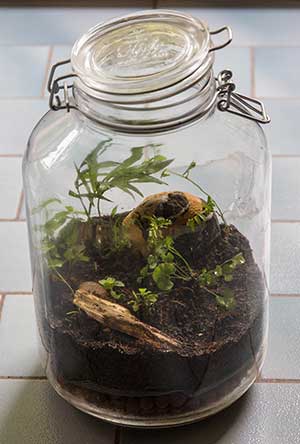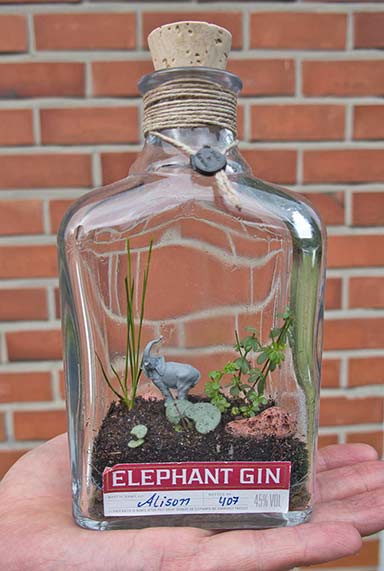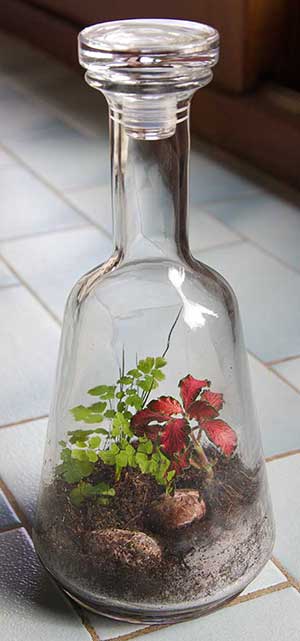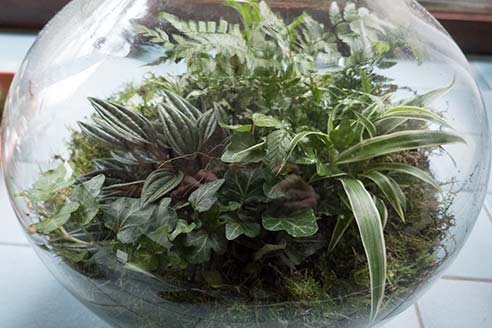Closed terrarium
Closed terrarium
📅 08-06-2017 • Δ 23-02-2019
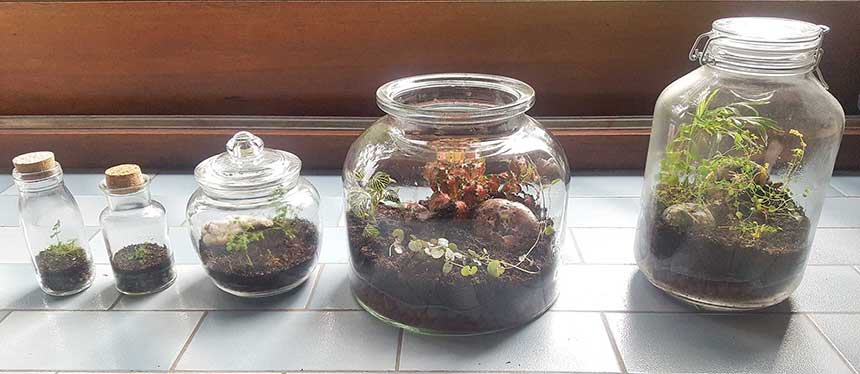
A closed terrarium has its own mini self-sustaining ecosystem. It has a closed micro climate.
Water evaporates, creates condensation and drips back into the soil. When a leaf withers, it is converted into
nutrition for the plants. At day photosynthesis uses CO2 (carbon dioxide) and produces O2 (oxygen). At
night, uses O2 and produces CO2.
Maintenance
- In theory, the closed terrarium only needs light, but not direct sunlight!
- Rotate the jar from time to time. Otherwise plants will grow in one direction (against the glass).
- Some plants will need to be pruned for aesthetics or because they become too big for the available room.
- Dead leaves can be removed (if they become rot) or leave them as nutrition.
- If the lid is from cork or other porous material, after a certain time add a bit of water (spray).
- Plants that like a humid environment are preferred.
- Fungus / mold must immediately be removed. It could be a sign of too much water (humidity). Remove the fungus with paper or cloth. Open the lid for a while until humidity decreases enough.
- Disinfect material when going from one terrarium to another. You could carry over diseases, fungus, moss spores, ...
Material
A glass bottle / jar / container that can be closed
The mixture I use
The quantities depend on the plants, the container size and what aesthetics you want.
Material at the bottom of the glass container is between 1/3 & 1/4 from the total height. It's filled from bottom to top:
- Drainage: stones / pebbles / gravel 1/4 to 1/2 (of the total filled content)
- Netting/gauze to separate drainage and ground / carbon. I use mosquito-netting. Cut to fit perfectly. It must touch the glass.
- Activated Carbon / Charcoal: a thin layer for filtering without openings between ground and pebbles.
- Soil, compost: same height as drainage to 2 times the height.
Images
